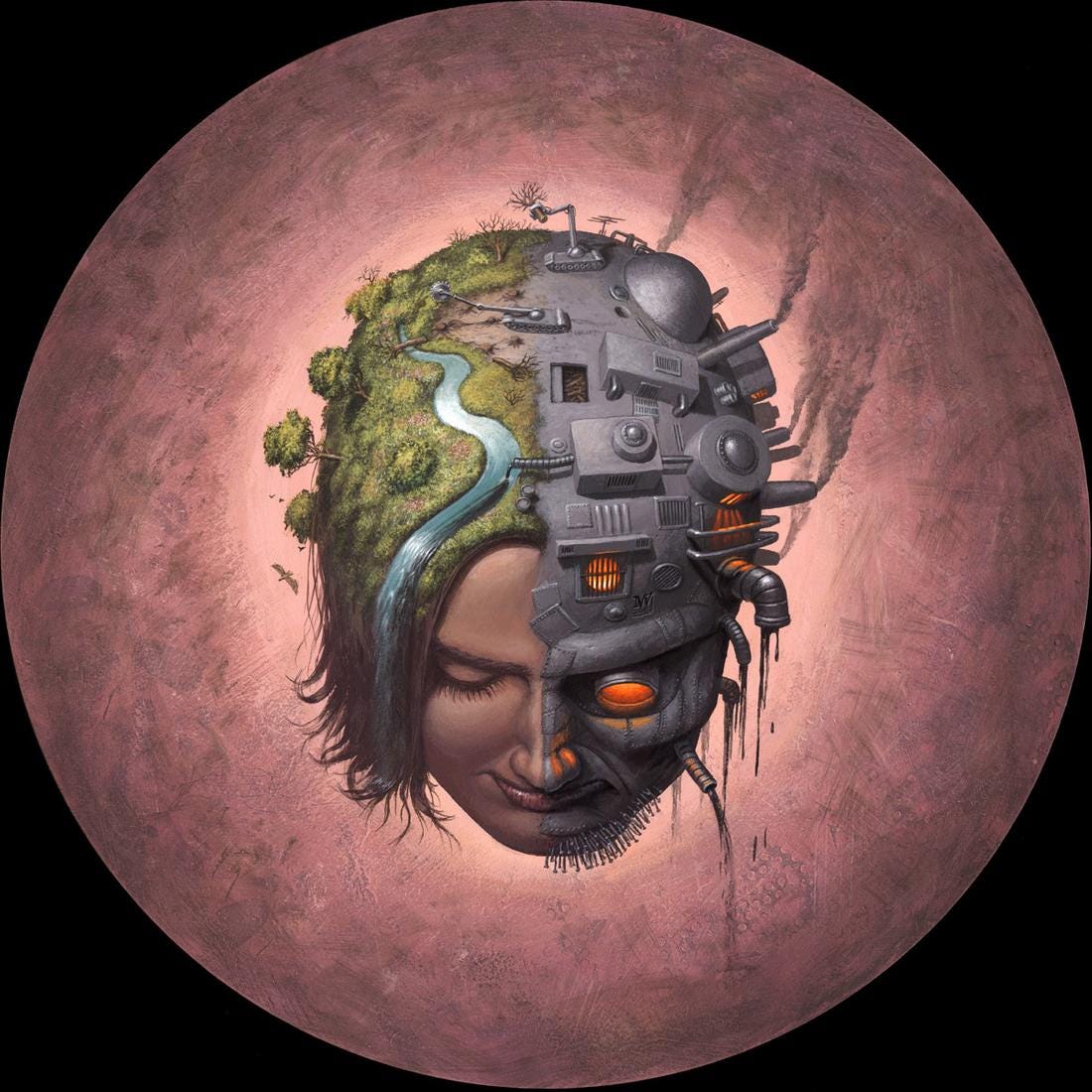
In 1980, American philosopher John Searle proposed a thought experiment known as The Chinese Room. Searle imagined himself locked in a room with a box of Chinese characters he cannot understand and a book of instructions that he can understand. Next, a native Chinese speaker passes messages under the door asking Searle various questions (in Chinese) such as “Do you speak Chinese?” Searle follows the book of instructions to answer these questions using the appropriate Chinese characters. Searle follows these instructions so well that he convinces the Chinese speaker that he too is Chinese.
Searle uses this thought experiment to show that artificial intelligence would act just like him when he was in the (Chinese) room. AI would take Chinese sentences as input, process them by following the instructions of a computer programme and produce perfect replies as output. Suppose that this computer performs the task so convincingly that a human Chinese speaker believes she is conversing with a live Chinese speaker? This would mean the computer passes Alan Turing’s “Turing Test”, where artificial intelligence convinces a human it is also a human.
The question Searle wants us to ponder is this: does the machine literally “understand” Chinese? Or is it merely simulating the ability to understand Chinese? Searle was not trying to prove that AI-powered machines could never appear to surpass humans in mental ability. He argued rather that computers do not process information in the same way that human brains do. Human brains should process information holistically, processing all information in the context of a bigger picture. If we process information mechanistically, then we act mechanistically.
The Thursday Thought this week draws an analogy between how the left hemisphere of the brain processes information in the same way as the Chinese Room experiment. The left deals with information out of context. It is the right hemisphere that understands the bigger picture. My thesis is that organisations process ideas like the left hemisphere and, as a result, stifle innovation and transformation. In a business environment characterised by volatility, uncertainty, complexity and ambiguity (VUCA) we must process information in a broad context, in line with the changing needs of society and consumer needs.
Left-Brained Business

I recently spoke to Iain McGilchrist on innovation show #184. Iain told us why the brain is lateralised (split into left and right) for a very good reason. Animals and humans experience competing needs, we need to focus attention narrowly and with precision while scanning a wider context. Brain lateralisation is very helpful when catering to these competing needs. Take writing; for example, a creative concept comes from the right hemisphere. To process that concept, write it down, choose the correct words and appropriate grammar, the left hemisphere steps up and does its job. The right loves the chaos of creativity; the left loves the logic of order. Together, the two hemispheres create a fruitful partnership.
Recall for a moment the Chinese Room experiment. Researchers pass a sentence (in context) under the door from the right hemisphere of a native Chinese speaker. The computer processes the sentence and only understands the logical sense of the sentence; it does not understand the entire context (nor does it care about the context). Similarly, the left hemisphere pigeonholes the idea, categorising it based on previous experience. If it cannot grasp the concept, it often rejects it or tries to force it into a previously categorised idea like a proverbial square peg in a round hole.
When a creative team introduces a new idea to an organisation, it spells death for many great concepts. If organisations do not reject creative ideas outright, they often force unrealistic timelines upon them. Creative ideas wither on the vine or in utero (and often the innovator leaves). If the left hemisphere (of the business) cannot make sense of the concept, if it cannot make it “fit in,” the left discards and rejects it.
“The human mind treats a new idea the same way the body treats a strange protein; it rejects it.”― P.B. Medawar
This is what Brazilian-born British biologist P.B. Medwar meant by the human mind rejecting ideas. To be more precise, it is the left hemisphere that does so.
By now, if you are a changemaker, a maverick or an innovation worker, this will feel all too familiar, so let’s take this idea into the workplace.
By now, if you are a changemaker, a maverick or an innovation worker, this will feel all too familiar, so let’s take this idea into the workplace. Imagine the organisation is like a giant brain. The left excels at order and the right thrives in chaos. All organisations start off with an idea, a concept from a founder or entrepreneur. This idea comes from the right hemisphere, the chaos room. The vision is fuzzy and lacks process; it lacks structure, and it lacks order. However, this idea originates from scanning the big picture, observing the business environment for opportunities and for threats.
The idea is “passed” from the right hemisphere to the left hemisphere, akin to processing a brainstorm session from post-it notes to an excel sheet; akin to passing the Chinese sentence under the door for processing. This is when the idea becomes or does not become acceptable to the organisation and gets processed for delivery. We need the left brain to bring some order to the chaos, to make it acceptable to the business. The left hemisphere has a vital role to play in innovation. However, left-hemisphere dominance is unhelpful when the left takes over. The left enjoys order a little too much and often overpowers the right hemisphere, killing innovation and creativity at the same time.
We also witness left-brain dominance in a business world, where shareholder value comes at the expense of stakeholder value. Enron v Earth. Volkswagen v Environment. Uber v Driver. If you are an employee that feels treated like a cog in a machine, an automaton, a “headcount”, then your business is left-brain dominant. Unfortunately, this has become the default.
If you are interested in exploring how AI (left mode) and Human creativity can work in tandem, it is well worth listening to episode 187 of the Innovation Show: AI for Marketing and Product Innovation: Powerful New Tools for Predicting Trends, Connecting with Customers, and Closing Sales, Dr A.K. Pradeep.
“I, being poor, have only my dreams;
I have spread my dreams under your feet;
Tread softly because you tread on my dreams.” — William Butler Yeats
Can a machine ever write this? The answer is “No”.
What a machine will tell you is:
Feet are important, dreams are important, stepping on stuff is hurtful and please use this and create a poem. So that would have been the creative brief to Yeats.
Thanks to artificial intelligence, the ingredients that we give to creatives may be a little more structured, but the human being will always be there!
We explore:
- How we can use AI and ML in ways that speak to the human spirit?
- How to we translate cold technological innovation into creative tools that forge deep human connections?
Written by a team of experts at the intersection of neuroscience, technology, and marketing the book we will discuss today is a must have for anyone looking at where innovation, marketing, branding and creativity is going next.
Fantastic Episode on AI and ML in an easy-to-comprehend way with Dr. A. K. Pradeep.
Have a listen:
Soundcloud https://lnkd.in/gBbTTuF
Spotify http://spoti.fi/2rXnAF4
iTunes https://apple.co/2gFvFbO
Tunein http://bit.ly/2rRwDad
iHeart http://bit.ly/2E4fhfl